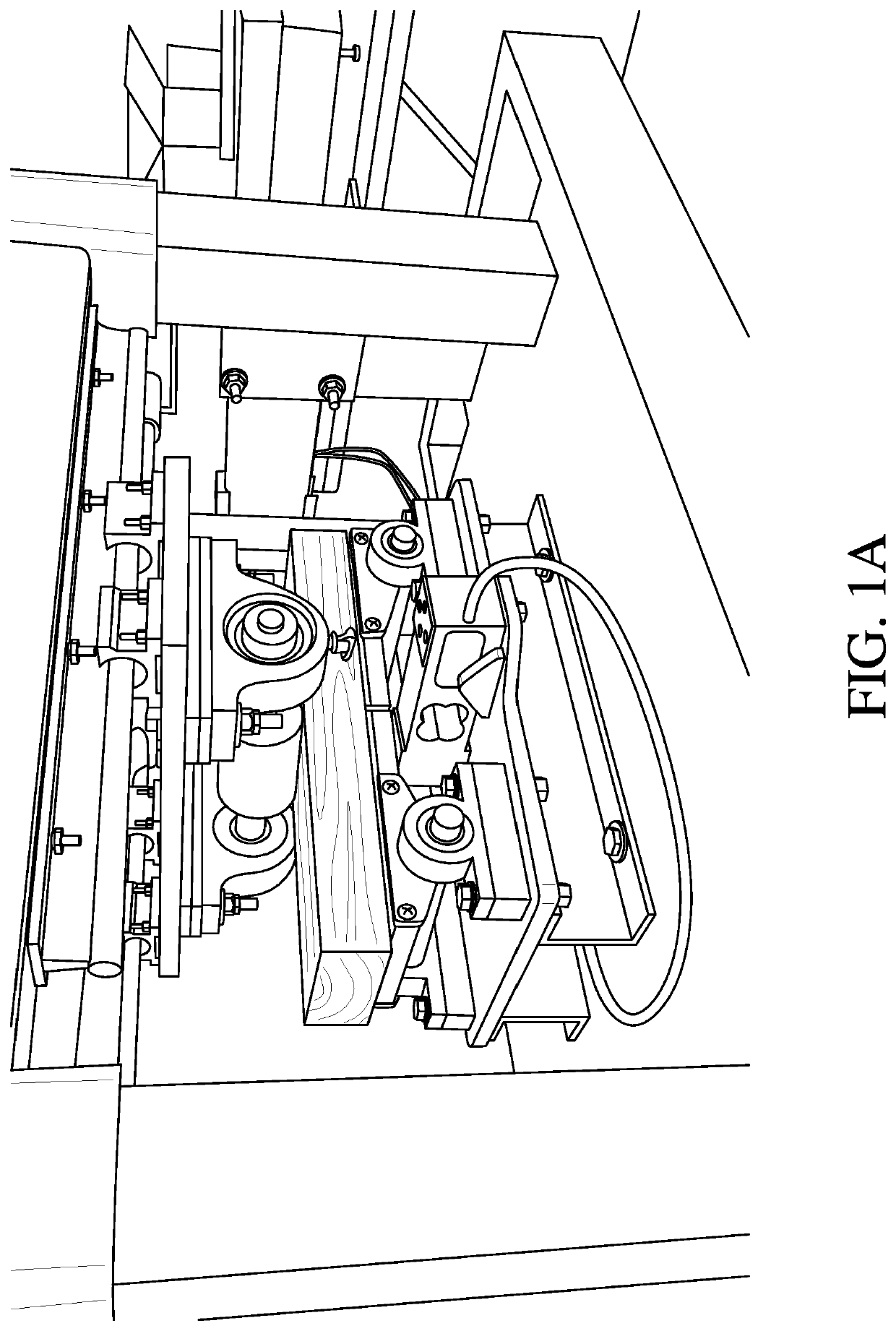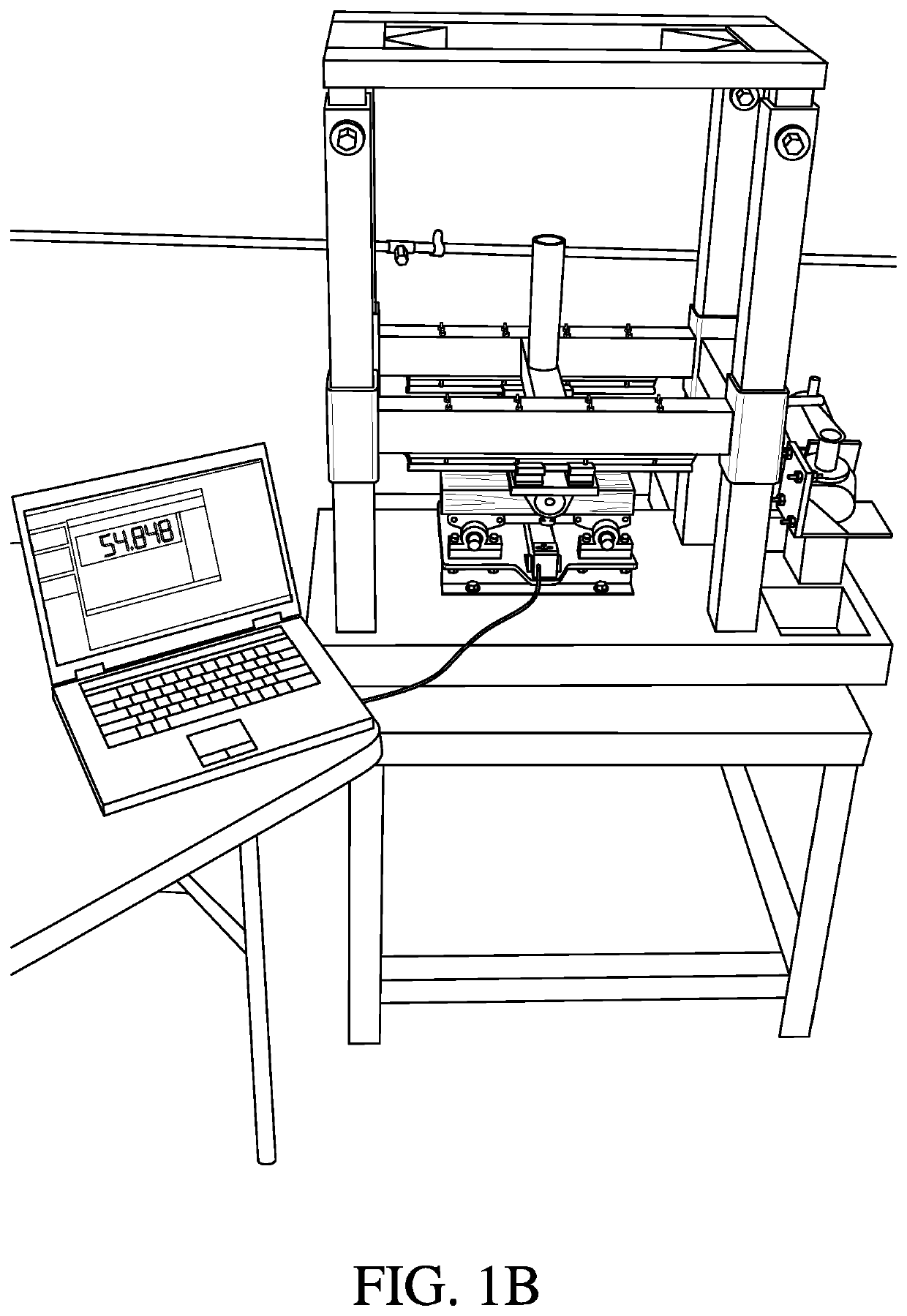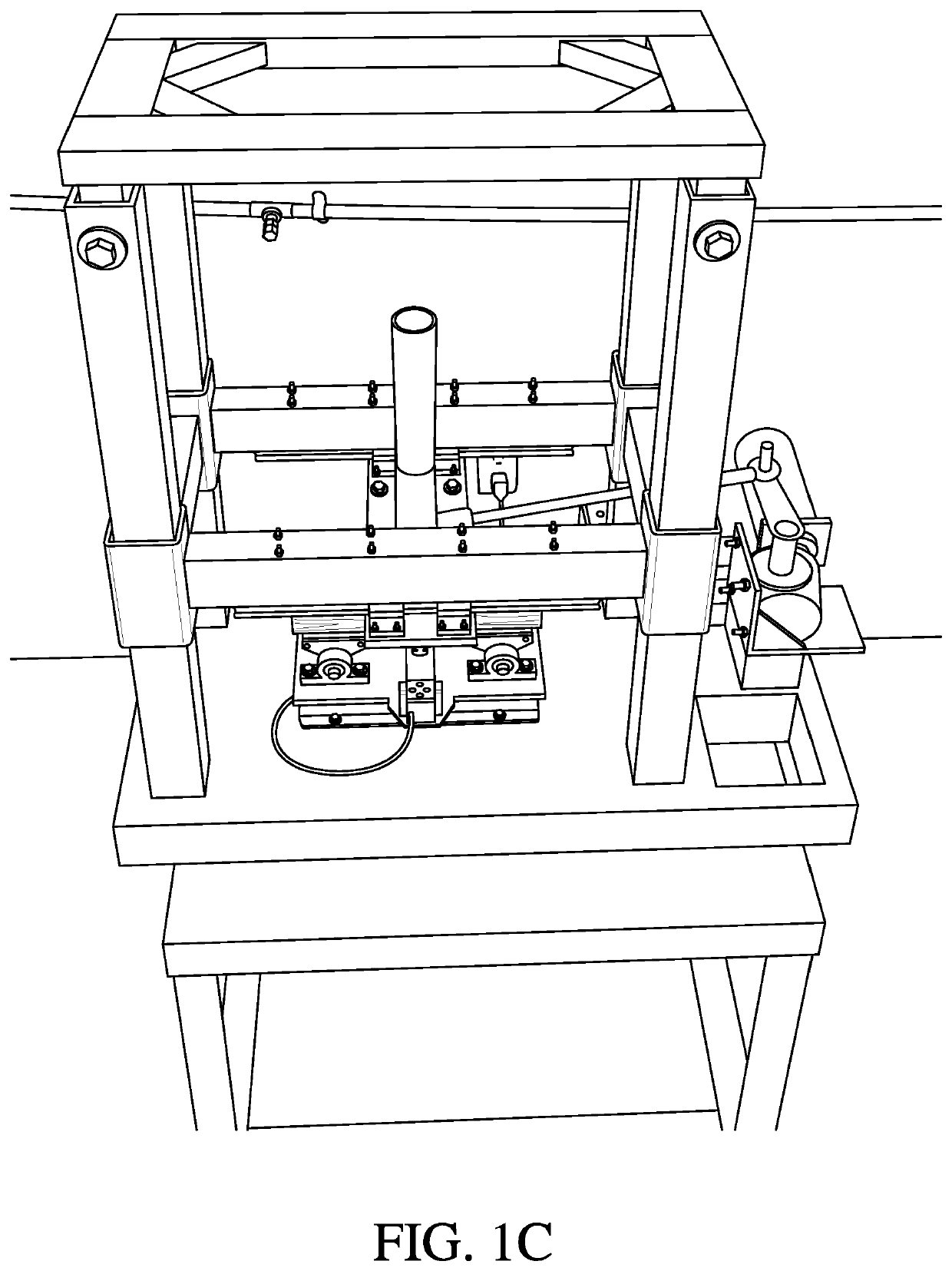Rolling cyclic fatigue test platform for determining asphalt ductility
a technology of asphalt ductility and cyclic fatigue, which is applied in the direction of measuring devices, material strength using repeated/pulse forces, instruments, etc., can solve the problems of increasing the cost of asphalt ductility testing, affecting the integrity of asphalt on the surface, and presenting great technical and financial challenges for the maintenance and repair of civil infrastructure, including roads and highways of the united states. achieve the effect of being more accurate and affordabl
- Summary
- Abstract
- Description
- Claims
- Application Information
AI Technical Summary
Benefits of technology
Problems solved by technology
Method used
Image
Examples
Embodiment Construction
[0037]The following description and examples illustrate a preferred embodiment of the present invention in detail. Those of skill in the art will recognize that there are numerous variations and modifications of this invention that are encompassed by its scope. Accordingly, the description of a preferred embodiment should not be deemed to limit the scope of the present invention.
[0038]Roads represent a unique combination of ‘greats’. Great importance to civilization; great in physical presence as the civil infrastructure category with the largest mass and production energy required, by a wide margin; great cost to build and maintain and great in frustration for engineers, budget managers and suppliers who have for over 130 years been trying to figure out how to make a better road for less money. How to make our roads sustainable has been an elusive but urgent endeavor. Progress has been made over these 130 years, but the overall effort is rapidly falling behind the increased traffic...
PUM
| Property | Measurement | Unit |
|---|---|---|
| temperature | aaaaa | aaaaa |
| temperature | aaaaa | aaaaa |
| size | aaaaa | aaaaa |
Abstract
Description
Claims
Application Information
 Login to View More
Login to View More - R&D
- Intellectual Property
- Life Sciences
- Materials
- Tech Scout
- Unparalleled Data Quality
- Higher Quality Content
- 60% Fewer Hallucinations
Browse by: Latest US Patents, China's latest patents, Technical Efficacy Thesaurus, Application Domain, Technology Topic, Popular Technical Reports.
© 2025 PatSnap. All rights reserved.Legal|Privacy policy|Modern Slavery Act Transparency Statement|Sitemap|About US| Contact US: help@patsnap.com



